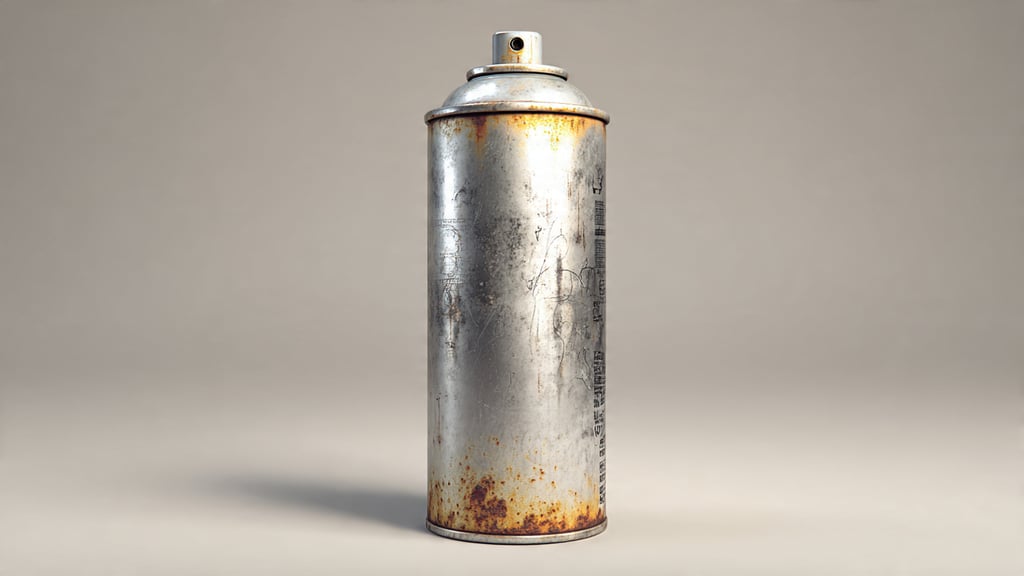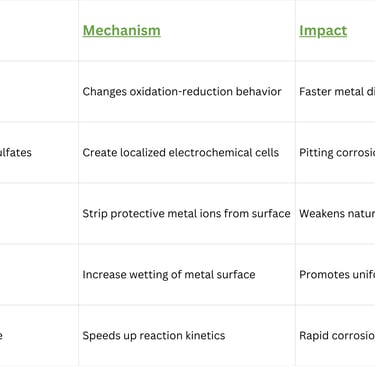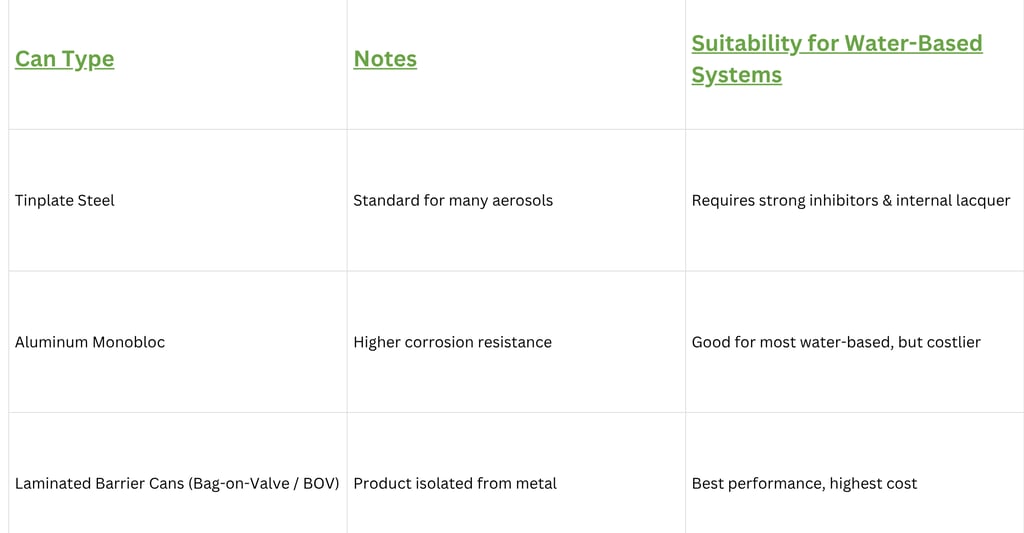Aerosol Can Corrosion - 1
Corrosion in Aerosol Cans, Causes, Types and Remedies - Part 1


Corrosion In Water Based Aerosol Cans Challenges and Remedies- Part 1
As the industry shifts toward sustainable formulations, water-based aerosols have become an attractive alternative to solvent-heavy products. Yet one of the biggest obstacles faced in their commercialization is corrosion inside the can. Left unchecked, corrosion not only compromises product quality but also leads to safety risks, consumer dissatisfaction, and loss of brand credibility.
Causes of Corrosion in Water-Based Aerosol Cans :
Unlike solvent systems, water is a highly reactive medium. When stored under pressure in metal cans, it accelerates several forms of corrosion. Key factors include: Moisture Reactivity: Water readily interacts with the internal metal surface, initiating electrochemical reactions. pH Sensitivity: Even minor shifts toward acidic or alkaline ranges increase corrosive activity. Dissolved Oxygen and Salts: Trace contaminants or oxygen dissolved in the formulation can trigger localized attack. Propellant Interaction: Certain propellant types influence solubility and moisture distribution, indirectly impacting corrosion rates. Types of Corrosion Observed Different corrosion modes can occur depending on formulation and storage conditions: Uniform Corrosion: A gradual thinning of the can wall, reducing strength over time.
Pitting and Crevice Corrosion
This is one of the most common and dangerous forms seen in water-based aerosols. It begins as small, localized attack points on the inner can wall — often initiated at weld seams, fabrication scratches, or areas with coating discontinuities. Over time, these pits can deepen rapidly and lead to pin-hole failure, causing leaks or pressure loss.
Stress Corrosion Cracking (SCC)
SCC occurs when mechanical stress (from pressurization) combines with corrosive conditions, leading to cracks in the can structure. Though less common, when it occurs, failure is sudden and catastrophic.
Coating Undercutting
Many aerosol cans are internally coated with epoxy, phenolic, or hybrid film-resins. However, if the formulation aggressively wets or permeates the coating, corrosion begins beneath the film. This undermines the protective layer, causing blistering and flaking.
Factors That Accelerate Corrosion in Water-Based Aerosols


Industrial Strategies to Control Corrosion

